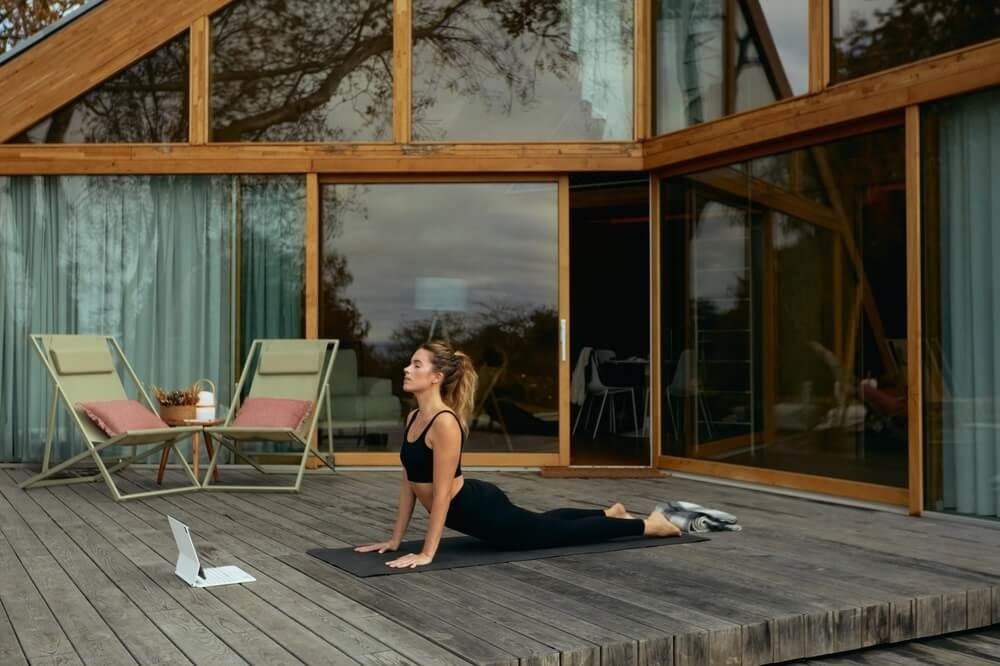
When it comes to fitness, you hear people all the time diving in with gusto, but then finding it hard to stick to it all! If you’re trying to seek long-term success in fitness, determination isn’t enough; it’s about creating a sustainable routine that fits well into your normal way of life—a step-by-step guide to getting a healthier, more active lifestyle without falling into burnout.
First, to create an excellent plan, one must understand what making a sustainable fitness routine means. Fitness isn’t about how much but rather about what you can sustain long-term without feeling overwhelmed by boredom or fatigue. It lets you sustain maintenance workouts with consistency that equals enjoyment and is proportionate to your personal goals and lifestyle.

Every sustainable fitness routine begins with clear, realistic goals. Ask yourself:
Be specific. Your best bet is to set measurable goals, not goals of declaring, “I want to get fit. " Examples include ‘I want to lose 10 pounds in three months’ or ‘I want to run a 5K before summer.’
Working out doesn’t mean circling from machine to machine. Make your workouts enjoyable by taking up activities you genuinely enjoy. Options include:
When you select those activities that excite you to get up and move, your workout becomes the highlight of the day, not a chore.
Many people are tempted to engage in an all-out sweat, but if you do, you’ll either end up injured or lose your motivation for a long time. Start small and work your way into a more intense sport.
That builds a lasting habit; an incremental approach allows us to progress steadily.
It’s a sustainable fitness routine that fits into your schedule. If time constraints are a concern, explore these tips:
It is better to stay consistent and reduce excuses when you are convenient.
Workout days aren’t the only essential days; rest days are. It also helps prevent burnout, lowers injury risk, and enhances performance. If time constraints are a concern, explore these tips:
Keeping track of your journey makes you feel good and also helps you see what to work on. Use fitness apps, journals, or wearables to track metrics like steps, weight, or workout duration.
You should celebrate these milestones to keep your enthusiasm going. For example, reward yourself with new workout gear if you hit a goal.
Your fitness routine should be neither too rigid nor too casual. Life is unpredictable. If you’re injured, busy, or not in the mood, change your plan, then make your plan to change.
Keep in mind it’s more about consistency than perfection.
Healthy living includes a good, sustainable fitness routine. Nutrition, sleep, and mental well-being are essential for the most significant outcomes of your active life. You should prepare meals that contain lean proteins, whole grains, and vegetables.
To further enhance your understanding of sustainable fitness, it’s helpful to explore additional factors that contribute to long-term success:
Knowing your motivator can sometimes help you stay motivated. Doing something because it’s inherently rewarded—intrinsic motivation—is more sustainable than pursuing extrinsic rewards (like external rewards). Reflect on why fitness matters to you. Is it to feel more energetic? Or to set a good example for loved ones?
A fitness habit is built on consistency and encouragement. According to research, forming a new habit takes about 66 days. Start creating it from the ground up and making triggers, like always working out after coffee.
The best thing about joining a fitness group or community is that it can keep you accountable. Whether through a local running club or an online fitness forum, sharing your journey with others gives you motivation and a sense of belonging.
Our tools today, like fitness trackers, apps, etc., make it easier than ever for you to monitor your progress: real-time feedback, session reminders, and workouts of your own specific goals and level of fitness.
Fitness is only one element of the equation. Physical activity, mental health, and emotional resilience are key components of true wellness. It can complement some of your physical efforts, such as journaling, gratitude exercises, and deep breathing.
Viewing fitness as a journey opens the door to clean growth, flexibility, and enjoyment. A sustainable routine isn't about perfection; it’s about consistency, patience with yourself, and finding joy in the journey to a healthier, happier you.
Creating a sustainable fitness routine that fits your lifestyle is a rewarding journey. By aligning your goals, preferences, and daily schedule, you can cultivate a habit that improves your physical health and overall well-being. Your active lifestyle will become second nature with patience, adaptability, and the right strategies.
Embrace the process, celebrate your progress, and enjoy the benefits of a sustainable fitness routine that supports healthy living for years to come.
This content was created by AI